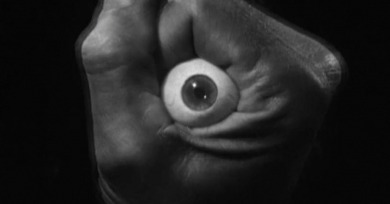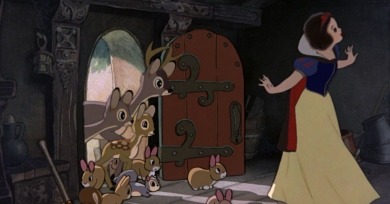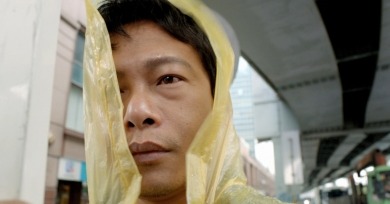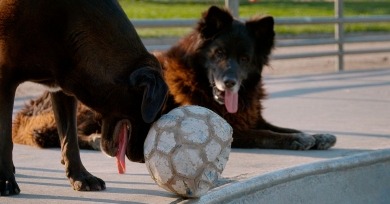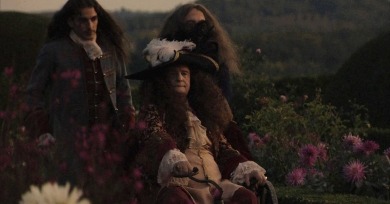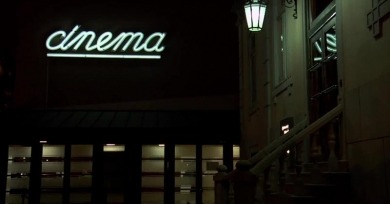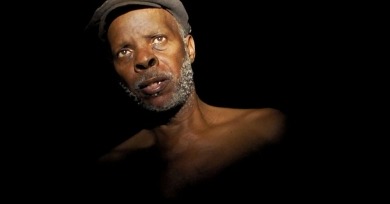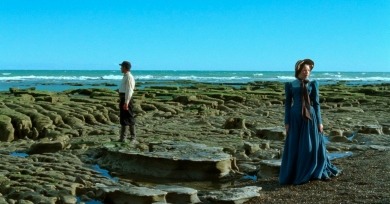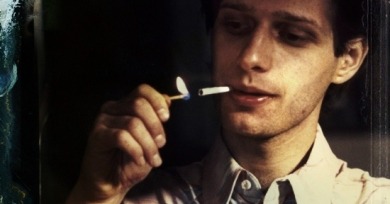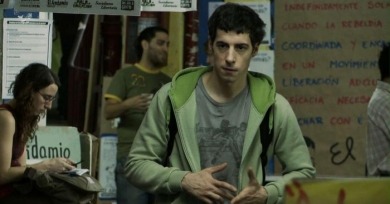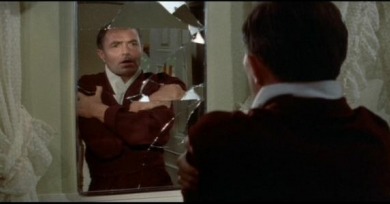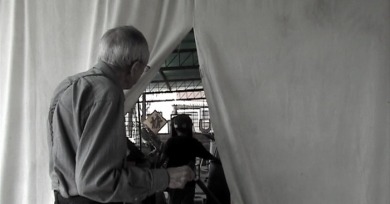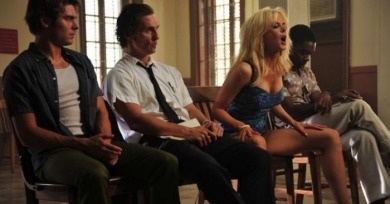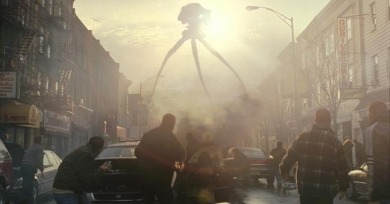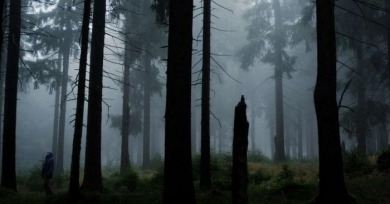Leo Goldsmith
There is something more than a little perverse about the release of this film at this particular moment. One need not lean too hard on its resonances in a year of sheltering in place, alone or in small numbers, accompanied only by a networked set of machines promising connection to a vast collection of media.
This week's pair of writers raise questions about contemporary pedagogy and parenting, sci-fi and fairy tales, isolation and ash, with an R-rated future parable and a trip back to storybook land.
This instability of place seems oddly appropriate for an artist who has been, in the decades of the new century, as seemingly adrift as the medium itself.
Shooting their dog protagonists in often exquisitely intimate close-ups of grizzled maws, fleshy gums, and weathered paw pads, the filmmakers foreground their curious status as semi-wild beasts that subsist both in the middle and at the margins of human society.
It is hard not to perceive something darkly subversive in the making of a film in which a beloved cinematic icon sits in bed, made up like a poodle and festooned in wig, frills, feathers, and fabrics, rotting away from gangrene while a whirlwind of bland and ill-equipped hangers-on try vainly to keep him preserved.
This elegiac essay-portrait is unexpectedly timely; it concerns Portuguese cinema and its uncanny position between life and death, past and future. Its subject is a legendary film scholar, programmer, and longtime head of Cinemateca Portuguesa.
All plot synopses are necessarily attenuations, but for Horse Money any summary feels especially futile, or even violent, a crude reduction of its complex network of impossible geographies, fuzzy memories, and jumbled chronologies.
With Jauja Alonso follows the ever-widening orbit his films have been tracing even further, nudging his trademark concerns away from the largely observational, vaguely romantic cinema of his earlier work into something considerably more expansive, playful, even supernatural.
Scorsese’s film actually incorporates and subverts more than one documentary convention at the same time: the interview, the archival fragment, the confession, the staged reenactment, the raw behind-the-scenes glimpse.
Produced under the aegis of Harvard University's Sensory Ethnography Lab, Stephanie Spray and Pacho Velez's film Manakamana seems to engage with something like a phenomenology of attention.
One of the enduring canards of that devilishly intractable film-critical tick known as auteurism is the notion that a certain filmmaker has obsessions, idiosyncratic (and, ideally, perverse) fascinations that find their way, almost furtively, into their movies.
Santiago Mitre’s The Student, from Argentina, suggests that student and national politics can be strange Machiavellian bedfellows.
Bigger Than Life is a film filled with contradictions, paradoxes and confusions of emotion and reason; indeed, these are part of what makes it big and ugly and beautiful as life, even in its outsized proportions.
In a way that distinguishes them from most works that deal with pre-existing footage, Duque’s work suggests that what continues to define cinema—against a purely iconic, informative mode of visuality—is the way in which it affords us privileged access to lived experience.
Leviathan is almost entirely disinterested in the naturalistic or anthropological, neither a landscape (or even seascape) documentary, nor an insight into labor and social relations. Instead, Leviathan offers an image of the world as almost something alien.
It’s less juicily problematic than sweatily provocative, a piling-on of situation and detail from which we can ultimately feel safely feel removed, secure in our lack of complicity, and comfy in our moral superiority.
Anyone baffled and disappointed by Lines of Wellington—a bloated, hastily composed Napoleonic epic prepared by Ruiz and completed by his widow and longtime collaborator and editor Valeria Sarmiento—needs to take a more sober glance at Ruiz’s oeuvre as a whole.
Precisely what fears these sinewy tripods are intended to represent—or, indeed, whose way of life is being threatened—remains ambiguous, even as it seems clear that Spielberg wants us to think something important about our lives during wartime.
From the modernist glimmer of New York’s skyscrapers to the gray colorlessness of the crop-dusting sequence to the deep reflective properties of that suit (insert obligatory Mad Men reference), North by Northwest is Hitchcock’s fullest exploration of the silverness of the silver screen.
Although born to a large extent out of film criticism and debate, the Dreileben films never feel engineered or studied, partly because of their explicit goal of expanding the possibilities in film form across art-house and mainstream genres.
